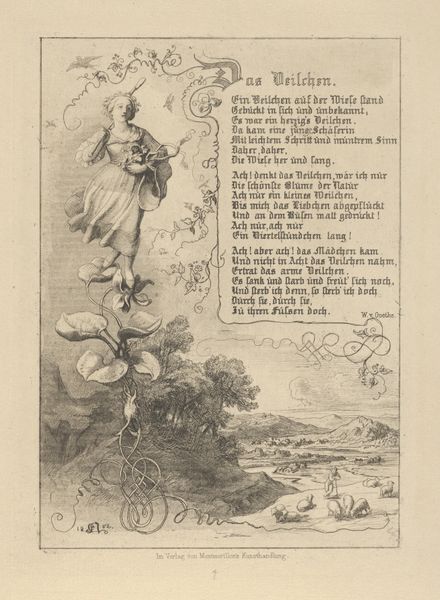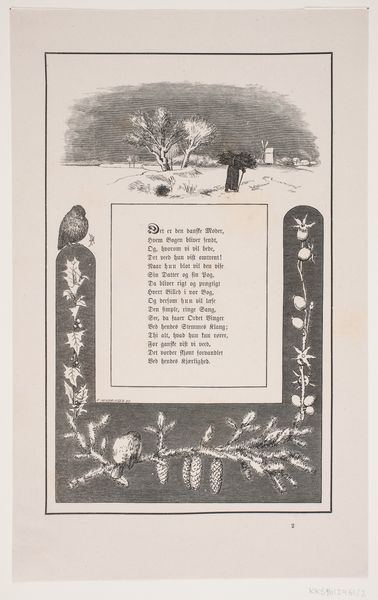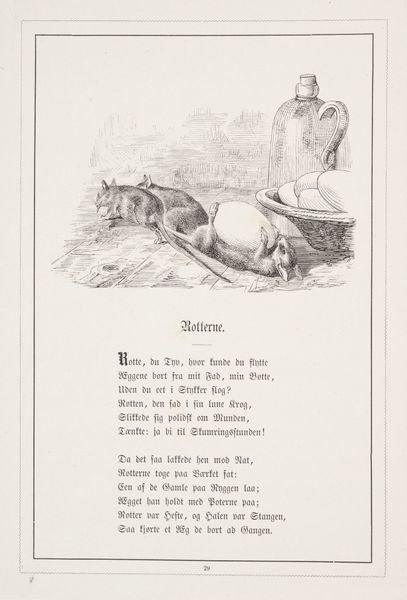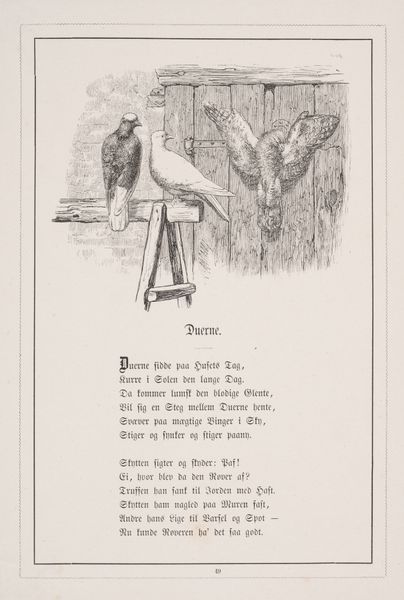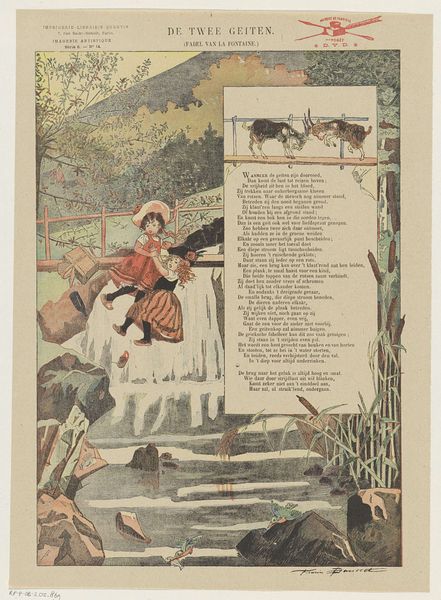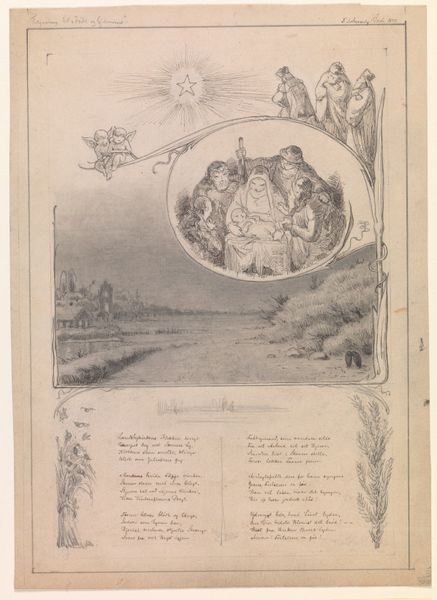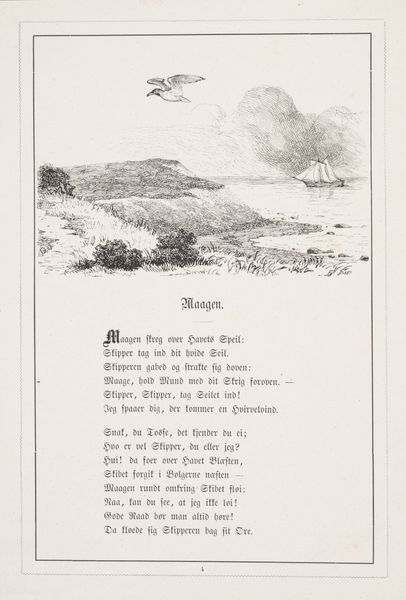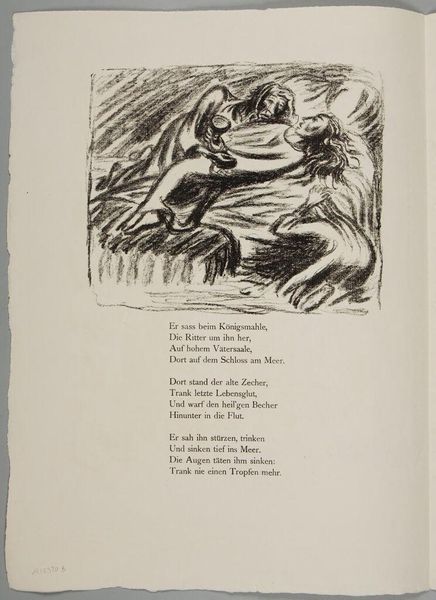
Illustration til "De Tvende Kirketaarne", digt af A. Oehlenschläger 1815 - 1882
0:00
0:00
drawing, print, engraving
#
drawing
# print
#
landscape
#
romanticism
#
engraving
Dimensions: 267 mm (height) x 167 mm (width) (bladmaal)
Editor: This is H.J. Hammer's "Illustration til "De Tvende Kirketaarne", digt af A. Oehlenschläger," created sometime between 1815 and 1882. It appears to be an engraving, depicting a small, overgrown church and some figures in a landscape. It’s quite charming, almost like a fairy tale illustration. What stands out to you in this piece? Curator: What I see here is a complex intersection of national identity and romanticized medievalism. Hammer’s illustration, meant to accompany Oehlenschläger's poem, uses the church, a quintessential symbol of Christendom, but also as a potential signifier for something beyond this singular meaning. This artistic choice prompts us to ask: how does this nostalgic representation of the medieval period reflect 19th-century Denmark's evolving national consciousness and what exclusions might this specific national fantasy reinforce? Editor: That's fascinating! So, it's not just a pretty picture, but a statement about Danish identity? Curator: Precisely. Consider the poem it illustrates, focusing on local legends and folklore. These narratives often become tools for constructing a shared cultural memory, reinforcing specific values and ideals. Do you notice how the natural elements—the overgrown vegetation—contrast with the church's structured form? Editor: Yes, it's like nature is reclaiming the church. Curator: Exactly. One way to see that is that Hammer’s vision of Danish cultural history reveals anxieties and perhaps some discomfort about the inexorable move toward "civilization" that defines much of modernity. The artwork urges a closer examination of these seemingly picturesque depictions and their connections to broader socio-political projects. The question for us is: whose stories are valorized and whose are erased in this romanticized vision of Denmark's past? Editor: That gives me a lot to consider, especially the implications of choosing which stories to tell. It definitely changes how I see the piece. Thanks for the deeper context. Curator: My pleasure. These works become truly powerful when we recognize them as part of an ongoing dialogue about who we are, where we come from, and how we wish to represent ourselves.
Comments
No comments
Be the first to comment and join the conversation on the ultimate creative platform.
